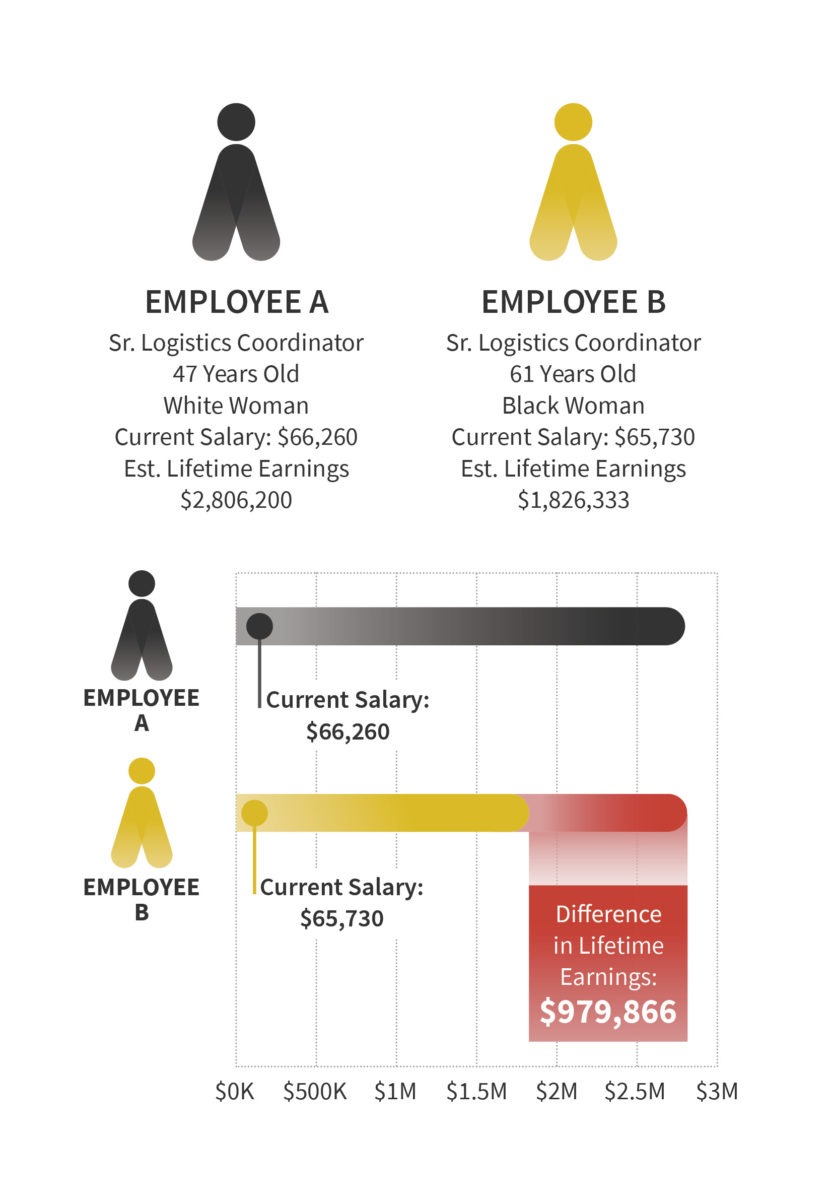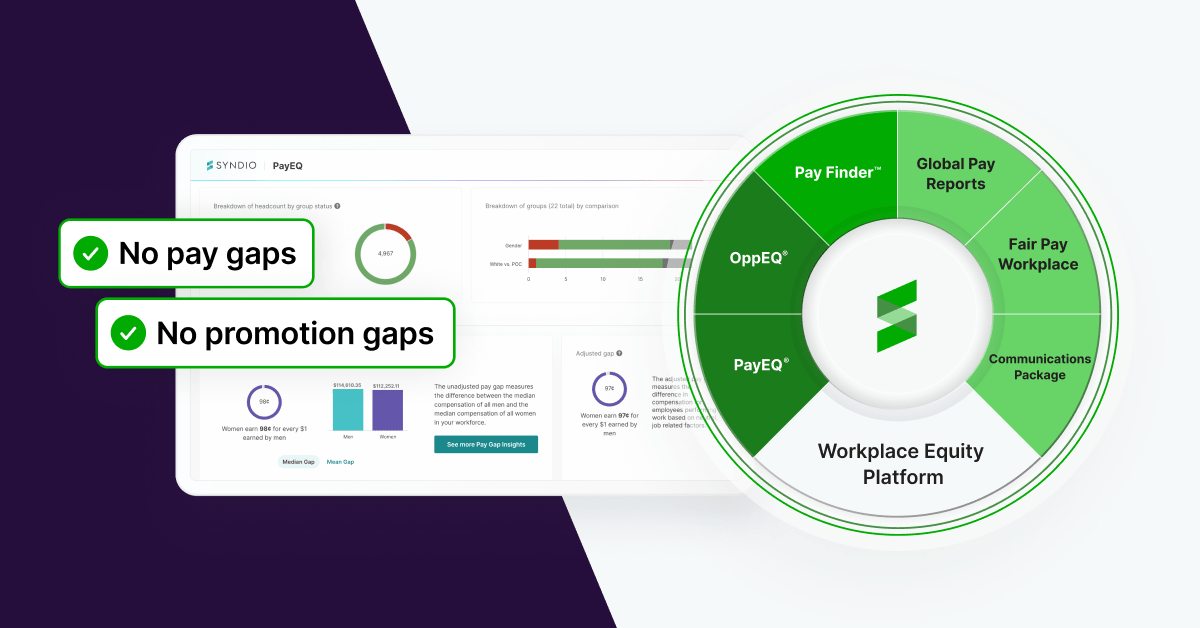The Black employee was promoted into the role at an older age, which means the racial wage gap will cause her lifetime earnings to be $979,866 less — nearly $1 million less — than her white colleague’s.
These pay discrepancies drive America’s racial wealth gap, which only compounds across generations of inequality.
New report examines the opportunity gap
Our latest report, To Fix Racial Pay Inequities, Focus on Transparency and Accountability, takes a hard look at what’s driving these pay disparities — in particular, the opportunity gap. The opportunity gap is the disproportionate access to opportunities such as jobs and promotions.
We analyzed industry data to show how people of color are not given the same opportunities to advance; and because of this, are under-represented in higher-paying industries and higher-paying leadership roles.
In Fortune 100 companies, 84% of CEOs, 80% of CTOs, and 96% of CFOs are white. While it may be tempting to brush off the lack of diversity at this level by saying the talent pool isn’t diverse, that’s only a symptom of the real root of the issue.
Inequitable educational opportunities, housing and occupational segregation, and disproportionate incarceration rates are all systemic societal factors that play a role in determining who gets access to specific kinds of jobs.
There are also organizational processes and decisions — like how you hire, promote, and compensate employees — that factor in. Despite your best intentions, you may find some of your business practices are actually part of the problem and adding to the opportunity gap.
The good news is that these organizational factors are within your direct control and a workplace equity analysis allows you to pinpoint inequities throughout your organization and drill down into root causes. You just need to be willing to turn over a few rocks and see what’s underneath.
Understanding the root causes of pay disparities
As a corporate leader, here are some things to consider as you seek to create change in your company.
The first step is to run a pay equity analysis to find out if you’re paying your employees fairly. It’s crucial to identify and fix pay disparities based on gender, race, and ethnicity.
Once you find pay inequities among employees doing substantially similar work and remediate underpaid employees’ compensation, then you can dig into the underlying business processes that created those inequities in the first place.
Ask yourself if there are changes you can make in any of these areas:
- Referrals — Closed referral networks mean that if your organization is largely white, your referrals will be too. Research shows that compared to white men, men of color were 26% less likely and women of color were 35% less likely to receive a referral for a role.
- Hiring — Discrimination and unconscious bias in your hiring process perpetuate the lack of representation in leadership. An NPR report revealed that 56% of Black people interviewed reported discrimination while applying for jobs.
- Starting pay — It’s not a good practice to use salary history to determine starting pay, as employees of color are more likely to have been underpaid in a previous role due to the prevalence of pay disparity between races. Also consider where there may be bias lurking in the starting pay conversation: the Journal of Applied Psychology found that employers perceived Black candidates as deserving lower starting salaries and penalized them more for negotiating than white candidates.
- Promotions and raises — Bias can influence both promotions and pay raises. Women of color are 19% less likely than white men to get a raise when they ask for one, and men of color are 25% less likely.
When you dismantle the root causes and redefine business practices, you create more opportunities for people of color to get in the door, get paid fairly, and move into leadership positions. And as we talk about in our report, that’s how you “turn a vicious cycle into a virtuous cycle.”
Keep the conversation going
Finding solutions to these challenges is what motivates our team. It’s our work and our passion, and we’re committed to helping employers on your journey to create truly fair workplaces.
Want to learn more? Watch our on-demand webinar Fairness at Work Episode #6: Eradicating the Opportunity Gap for People of Color in which I speak with Frederik Groce, Principal, Storm Ventures and co-founder of BLCK VC, about how employers can actively work to eradicate the opportunity gap for people of color. You can also download our report to learn more about steps you can take to achieve pay equity and close the opportunity gap.



